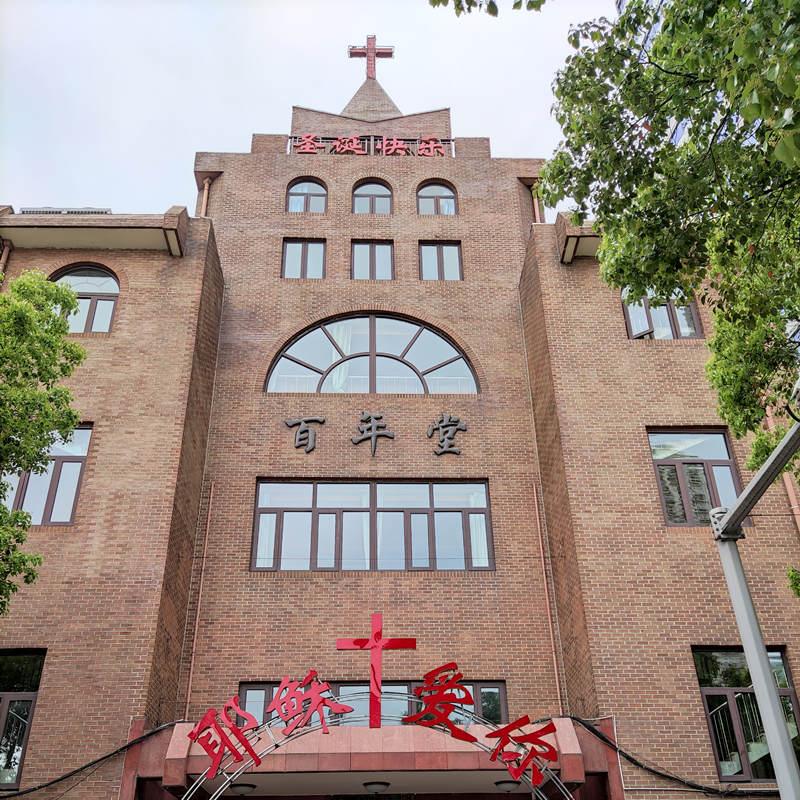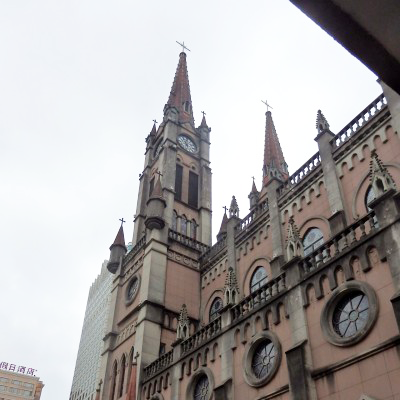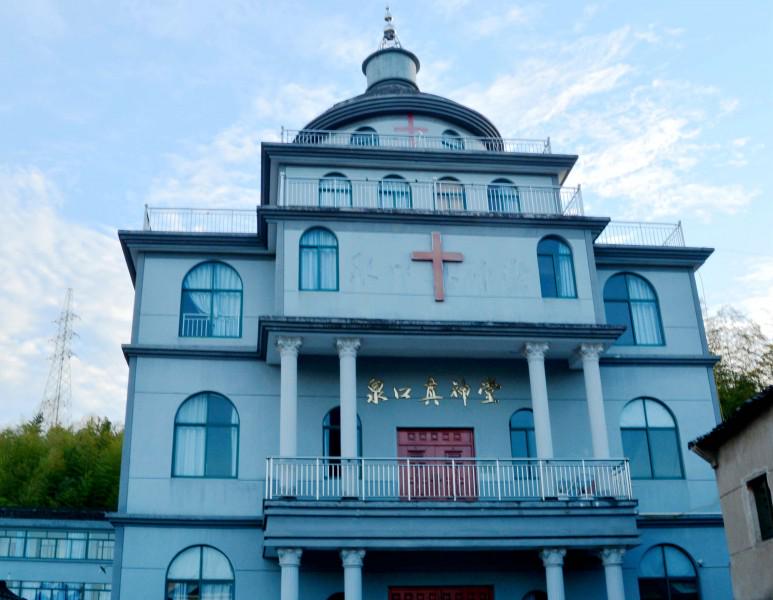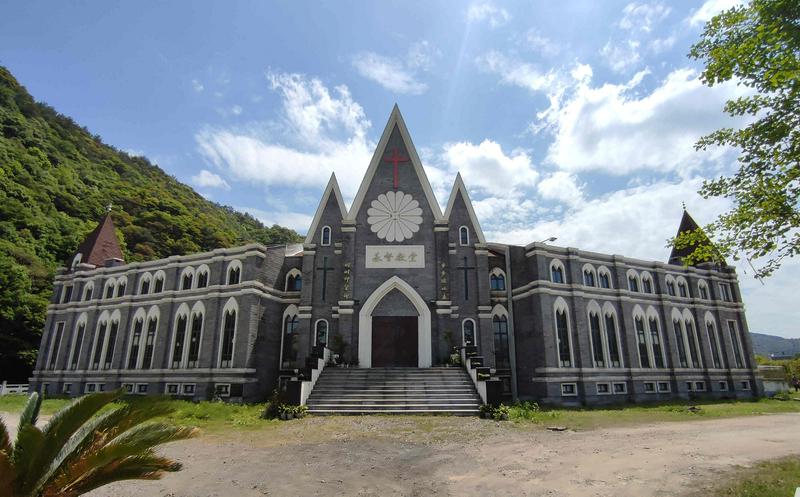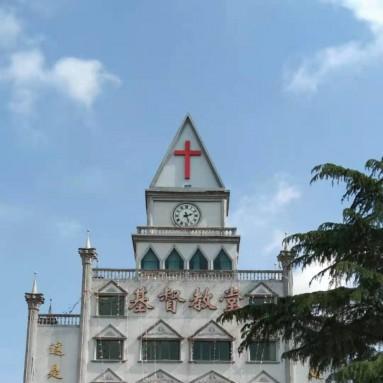In late April 2021, my colleagues and I visited five churches in Ningbo, Zhejiang Province. Although the entrance was not allowed into some of them because it was not Sunday, we still witnessed the glory of the temples of God. I would now like to share my impressions with you as follows:.
Ningbo Centennial Church
This is a famous church both at home and abroad. Located at No. 63, Daliang Road, Jiangsha Street, Haishu District, Ningbo City, Zhejiang Province, Ningbo Centennial Church greets people with red letters that read, Jesus loves you. Despite its name, this church was not built a hundred years ago. The present building of this church was first completed in May 1948 at Daliang Street by the Yincheng Pastoral District of the Zhejiang Diocese of the Chung Hua Sheng Kung Hui (or the Anglican-Episcopal Province of China). The purpose of this church was to commemorate the onset of preaching activities by the Anglican Church in Ningbo in 1848, so it was named the "Centennial Church."
The Gothic-style building is one of the most famous churches in the history of Christianity in China. On April 8, 1979, worship was resumed in this church, and it was the first church to be reopened in China after the Cultural Revolution.
The Centennial Church is currently the central church of Ningbo and the office of the municipal CC&TSPM.
Our Lady of the Assumption Cathedral in Yaohang Street, Ningbo
In Tianyi Square in Ningbo, you can see a Gothic church with Catholic characteristics and a Catholic cross at the top of the church from a distance. It is said that the clock tower here makes it the highest church in China at present, with a height of 66 meters, which is very noticeable even in a modern city with many tall buildings.
The official name of the Catholic Church in Yaohang Street is "Tianyi Church," also known as "Our Lady of the Assumption Cathedral." The main hall of this church can accommodate up to 1,000 people for gatherings. A large statue of the Virgin Mary can be directly seen in front of the altar in the main church, whose commemoration day is celebrated on August 15 each year. There are many statues inside and outside the church that are lifelike and magnificent. The church was founded in the 11th year of the reign of Emperor Tongzhi of the Qing Dynasty (1872), and the bell tower was added in the 25th year of the reign of Emperor Guangxu (1899). After more than 100 years of ups and downs, it was once even destroyed by fire, and now it is a rebuilt church.
True God Quankou Church in Xiaowangmiao, Fenghua
The predecessor of the "Xiaowangmiao Christian Church" of Fenghua is the "Church of the True God" in Xiaowangmiao Town, Fenghua County, which belonged to the Eastern Zhejiang Baptist Church (U.S.A.). It was founded in 1893, and the western missionary whose Chinese name was Song Aiwen presided over meetings in a rented house. In 1902, the meeting place was moved to another rented private house in Xiaowangmiao (Quankou), and a church branch committee was set up, with Mr. Yu Sicai as the director. In 1909, Sun Guofu, a Shanghai teacher, was invited to preside over the ministry of the church. This church branch was established in October 1916 and named "Quankou Church of the True God." In July 1920, a stone tablet was erected as proof (it still stands in front of the Xiao Town church).
During the more than one hundred-year history of Xiao Town Church, it has witnessed very significant changes, from renting houses for gathering, buying land for church building, ceasing gatherings, reopening the church, to purchasing land that has twice the total area of the original. The current number of believers is more than 300, with 8 prayer venues, 12 volunteers, and a total chapel area of more than 2,000 square meters.
Fenghua Xikou Jesus Church
Xikou Jesus Church is located on the bank of the Shanxi River in Xikou Town, Fenghua; this church, together with various Xikou scenic spots, echoes each other at a distance. The church’s current building was rebuilt three times, and the latest foundation stone was laid on November 2, 2013. The new church covers an area of 10 mu (about 6666 square meters); the planned area of the main hall is 3000 square meters, with an investment of more than 10 million yuan, and the main hall can accommodate a thousand worshipers.
The design of this church has a unique style: the front of the altar, the dome of the main hall, even the hall, and the door are all wide at the bottom and small at the top, giving people a sense of stability and steadiness. The pastor of the church said that the overall design of the interior of the main church is in the shape of a bottle. “There came unto him a woman having an alabaster box of very precious ointment, and she poured it on his head as he sat at meat," according to the inspiration from Matthew 26:7.
The second phase of the building, that is, the complex building, is also under construction.
Fenghua Bridge Christian Church
Bridge Church was first built when the government allocated the farmland on the edge of Doumen Village in Fenghua Bridge Town for the construction of the church, known locally as the “crap land.” After the church was built, it was recognized as a dilapidated building and was about to be demolished. But after reinforcement, according to the inspection reports of relevant departments, it no longer needed to be demolished. In 2021, the church was no longer in a remote suburb or “crap land," but in the center of this region, surrounded by commercial housing and business areas. One of China’s top ten real estate developers is optimistic about the location of the temple. After negotiation, a consensus was reached. The government allocated a new piece of land to rebuild the church.
The planned construction area of the new church is more than 14,000 square meters. The site is under intensive and orderly construction. The main body of the project is expected to be completed this year, and the whole project is planned to be completed in 2024.
(The writer of this article is a staff writer for the Gospel Times. Thanks for the help from all co-workers in Quankou Church of the True God, Xiao Town, Fenghua!)
- Translated by Nicolas Cao

